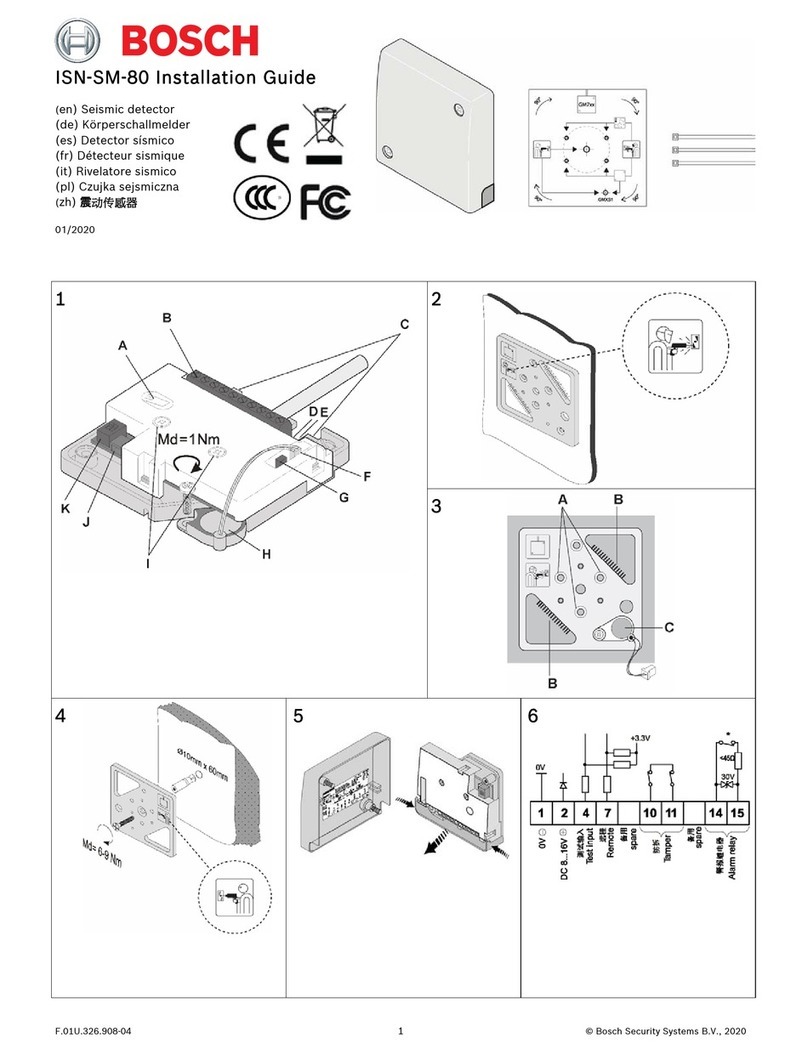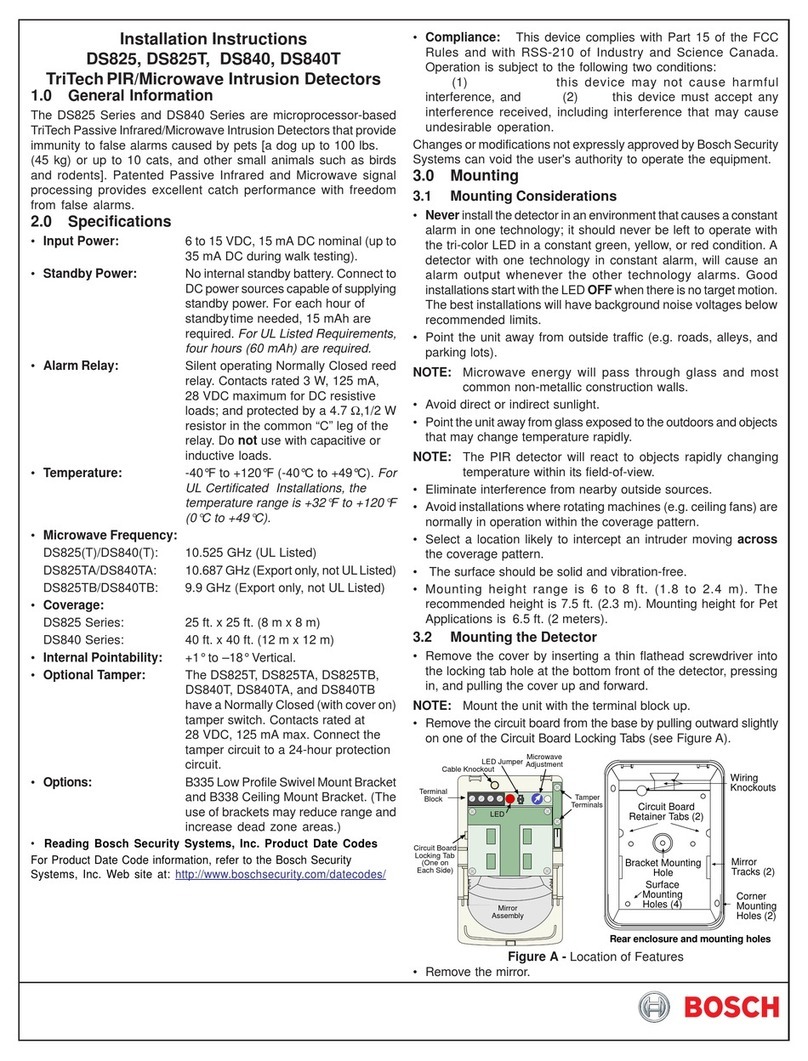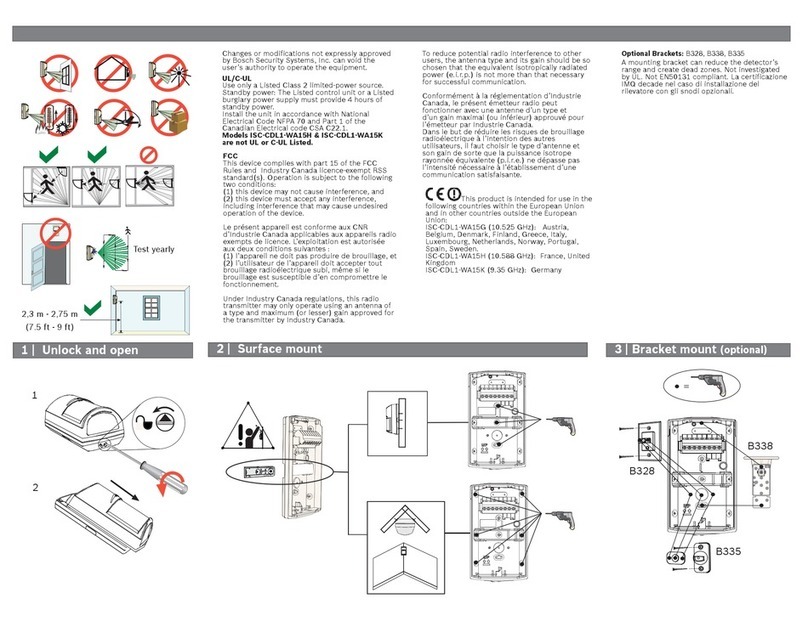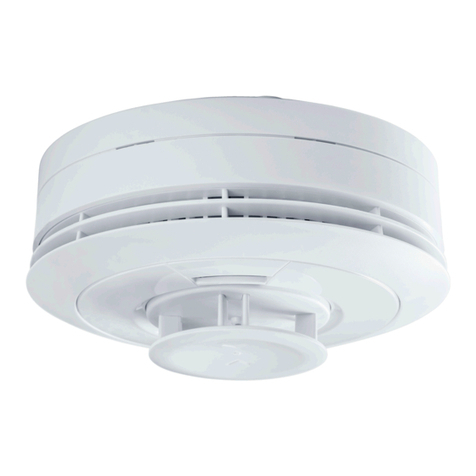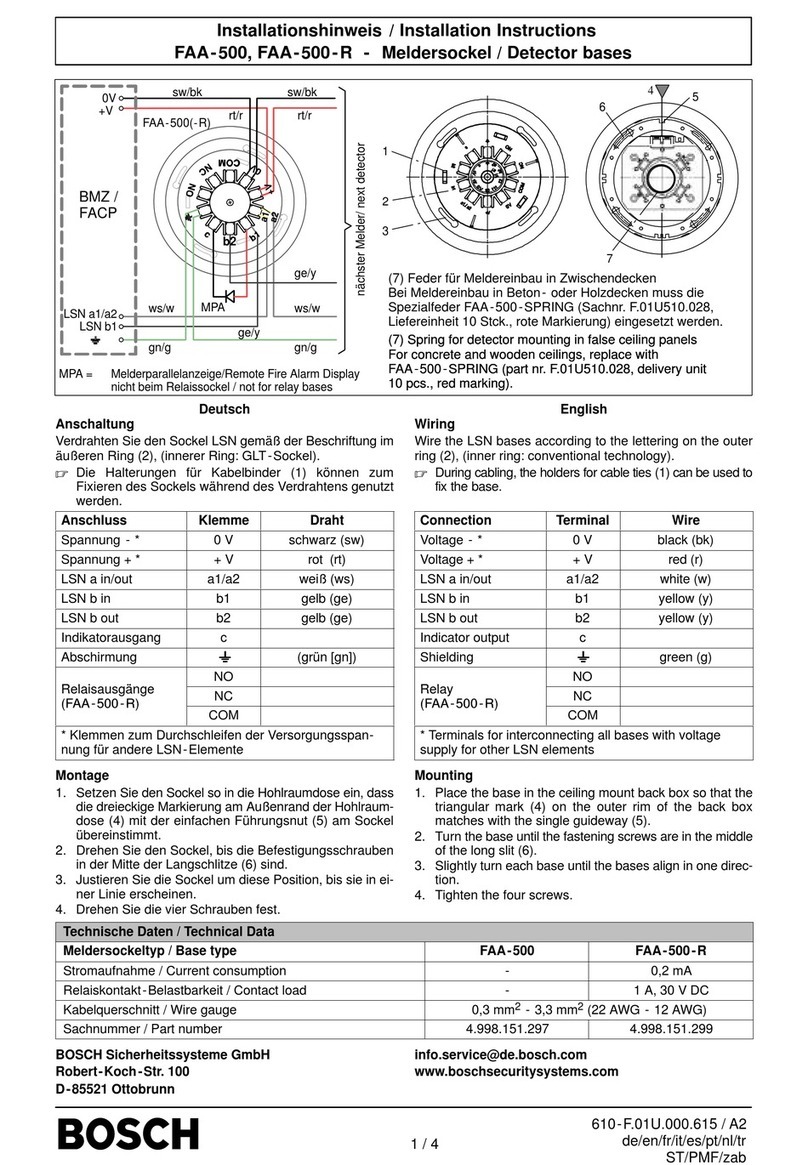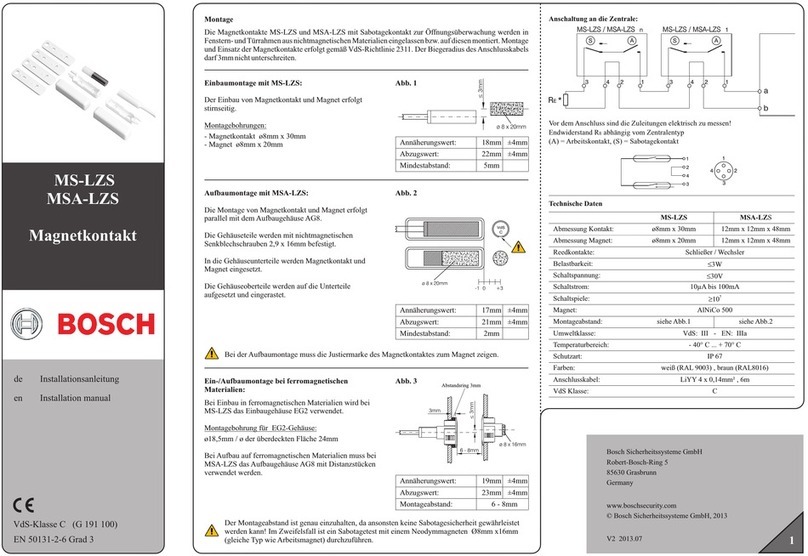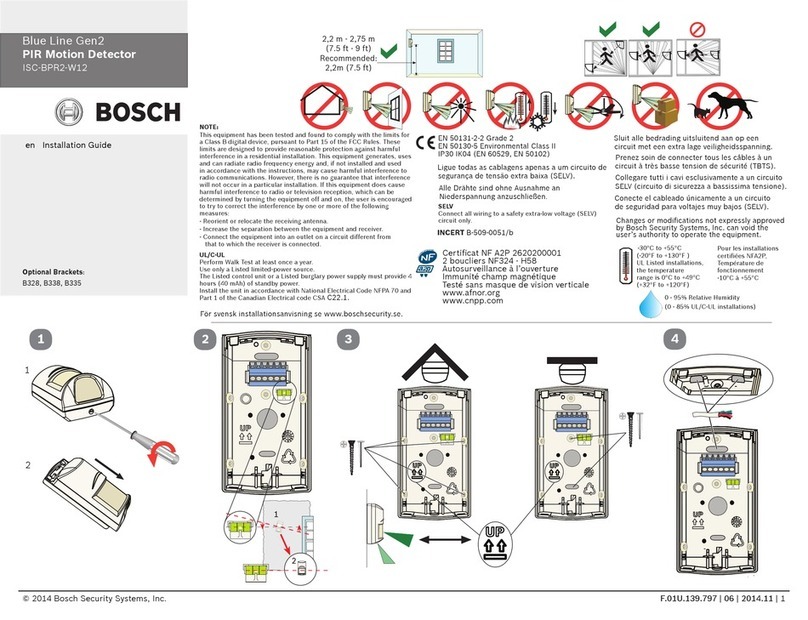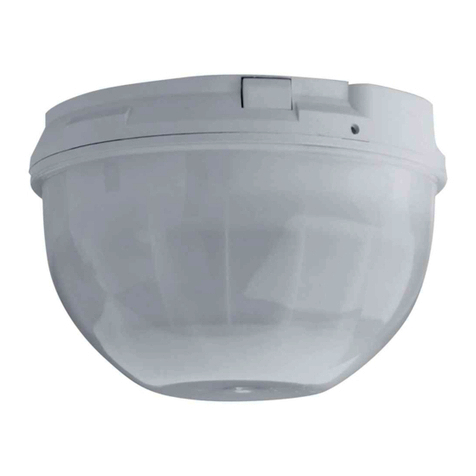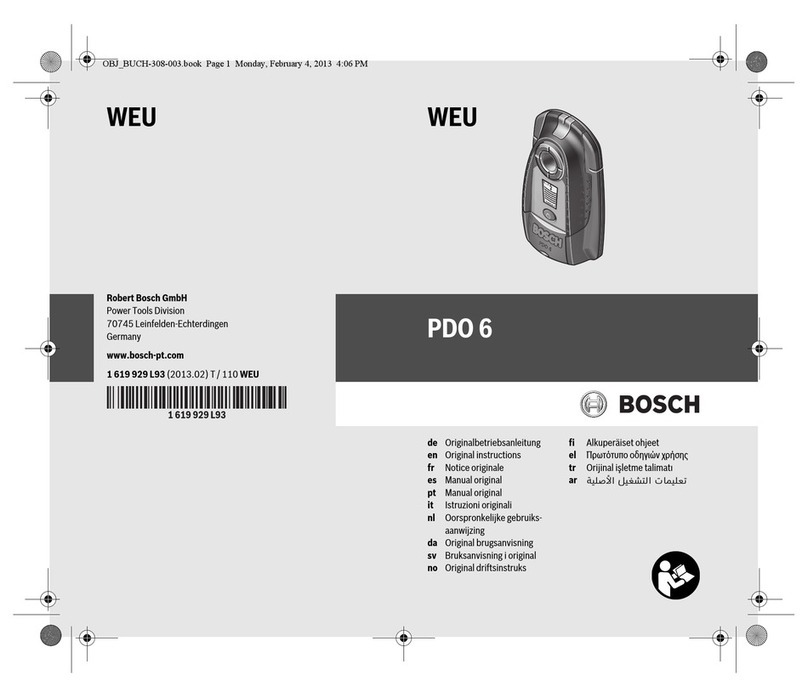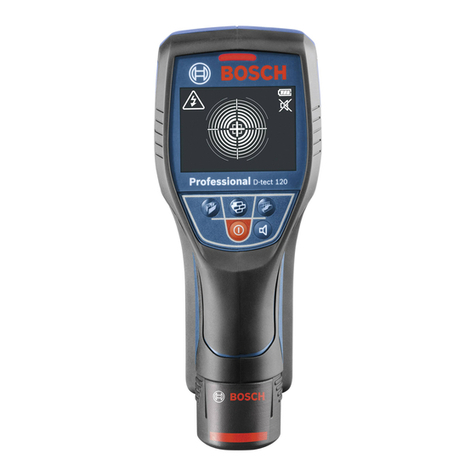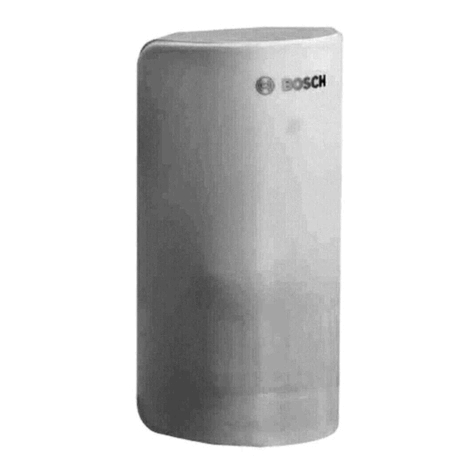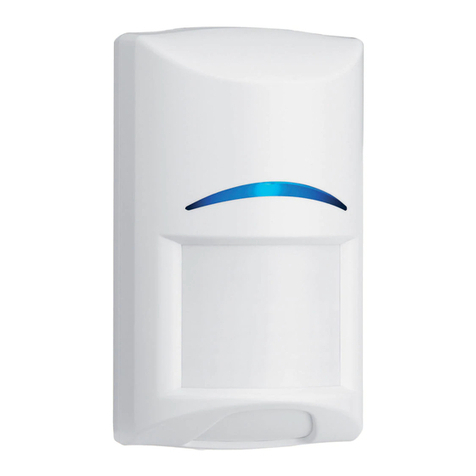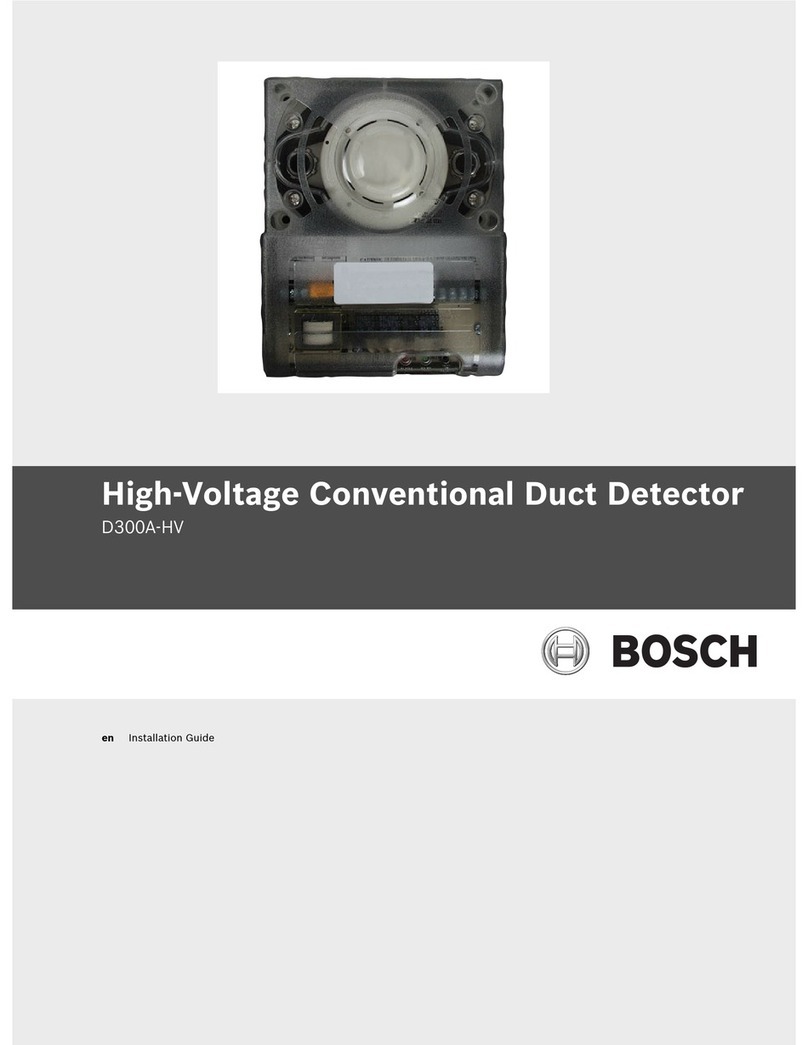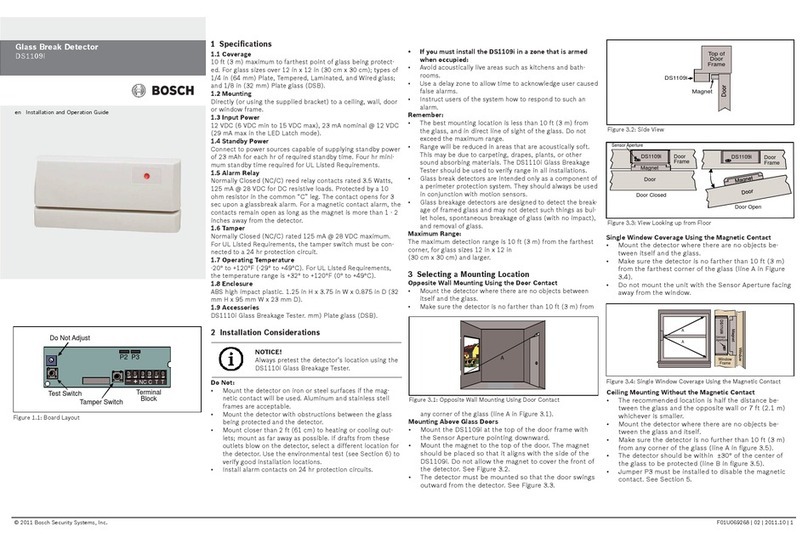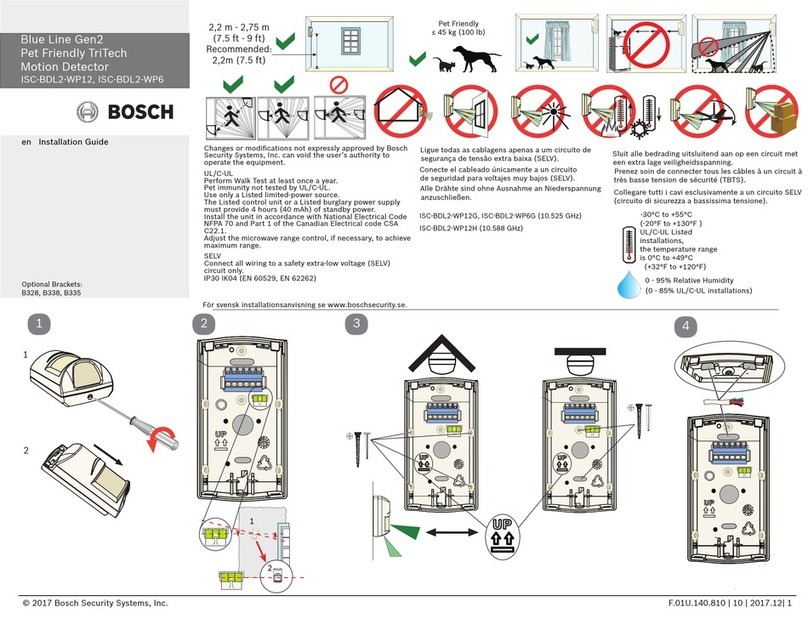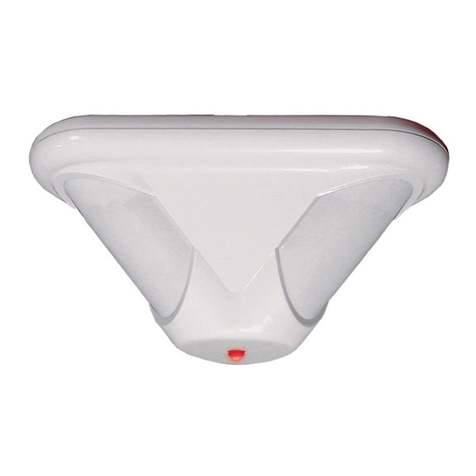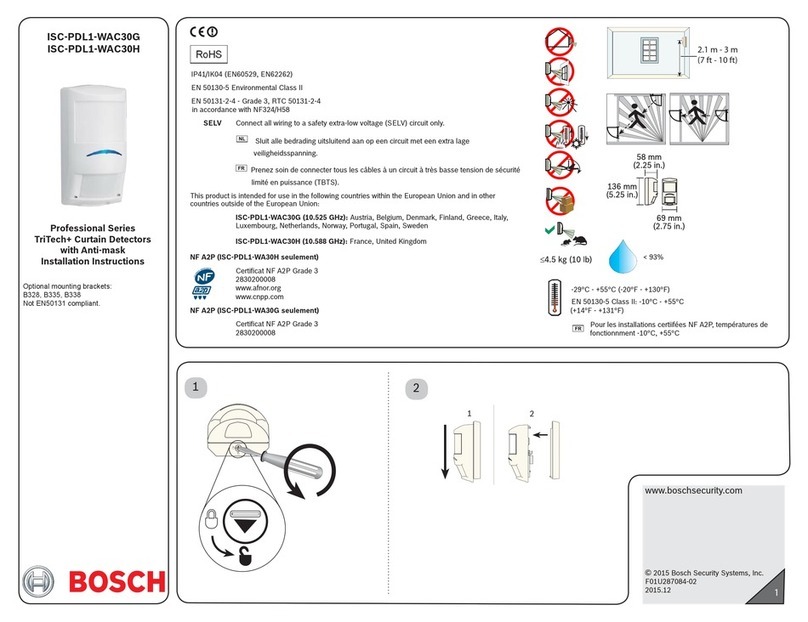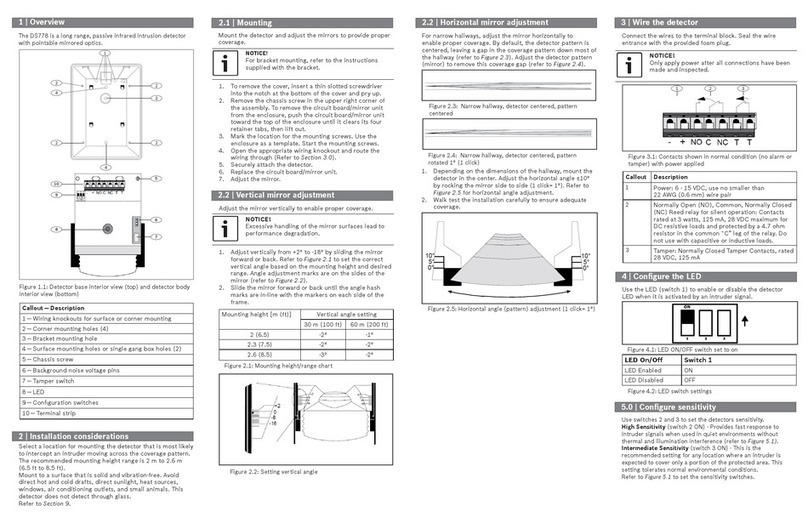
DS938Z Installation Guide © Bosch Security Systems, Inc. 2011 Page 3
7.2 Sensitivity Mode (S2 and S3)
Sensitivity modes depend on the type of coverage desired and the
installation environment.
•Standard Sensitivity: Tolerates environment extremes on this
setting, but requires the largest amount of intruder motion to
achieve an alarm.
•Intermediate Sensitivity: The recommended setting for most
installations. Use in locations where an intruder is expected to
cover only a small portion of the protected area. Tolerates
normal environments on this setting. The detector is shipped
inIntermediateSensitivity mode.
•High Sensitivity: The setting for fast response to intruder
signals. For use only in extremely quiet environments where
ceiling drafts, and thermal and illumination transients are not
anticipated.
If both switches are in the OFF position, the unit will default to the
Intermediate setting.
NOTE: Although the sensitivity modes provide different degrees of
tolerance to environmentally caused alarms, the installer should
assure peak background noise voltage readings do not exceed
±0.15 VDC. (See Section 8.0 Final Tests).
7.3 Motion Monitor (S4 and S5)
Set switches S4 and S5 for the desired Motion Monitor time (see
Section 9.0 Supervision Features). The detector is shipped with
the Motion Monitor feature disabled.
7.4SignalGain
The DS938Z permits selection of the signal gain depending upon
the environment to be protected. The gain select jumper is located
under the optical module.
•High Gain: Recommended for large coverage applications up
to 60 ft. (18.3 m) in diameter. The DS938Z is shipped in this
setting. If the gain select jumper is missing, the unit will default
to High Gain.
•Low Gain: Recommended for applications where the area to
be covered is 40 ft. (12.2 m) or less in diameter and for
applications where High Gain may be too sensitive for
environmental extremes.
NOTE: Setting the DS938Z for Low Gain reduces the coverage area to
40 ft. (12.2 m) in diameter.
8.0 Setup and Walk Testing
• Attach a TC6000 Test Cord to the Noise Voltage terminals.
Since the outside terminals are common, polarity is not
important and the black lead may be toward or away from the
optical module.
• Attach a Sonalert to the sounder pins at this time if one will be
used during walk testing.
NOTE: The use of a Sonalert type device (sounder) will provide an
audible tone during the time the unit is in alarm. Of the three
available connector pins, the center pin is positive (+) with
respect to either outside pin (outside pins are common (-)).
•Place the cover on the unit, and twist-lock it clockwise into
place.
NOTE: Be sure the TC6000 and Sonalert leads are dressed through the
cutout.
• Apply power to the unit.
•Wait at least two minutes, after applying power, to start walk
tests.
NOTE: Walk testing should be done across the coverage pattern as
shown.
• The edge of the coverage pattern is determined when the Alarm/
Test LED indicator (and optional Sonalert®, if installed) first turns
on.
• Walk test the unit from all directions to determine the
boundaries.
• After completion of the walk tests, remove the Sonalert®(if
installed).
9.0 Final Tests
9.1 Noise Measurement
NOTE: Meter readings are very important in determining background
disturbance levels and catch margin sensitivity.
• Connect a 20,000 ohm/volt (or greater) DC VOM to the Noise
Voltage connector using the TC6000 as shown. Set meter scale
for about 3.0 VDC.
• The base reference level for reading background noise or target
voltages is approximately 2.0 VDC. Installations in quiet
environments, therefore, will result in a steady meter reading
between 1.9 and 2.1 VDC. Look for areas and sources of thermal
disturbances if the meter fluctuates greatly.
9.2 False Alarm Prevention
• Turn on all heating and cooling sources that would normally be
in operation during times of protection. Stand away from the unit
and outside the coverage pattern, then monitor the background
noise for at least three minutes.
Readings should not deviate from the reference level more than
±0.15 VDC. For readings outside these limits; eliminate the
cause, rotate the unit slightly, or mask out the mirror segment(s)
looking down at the thermal disturbance.
9.3 Coverage Margin
• Again walk across the farthest edge of required coverage.
A minimum voltage change of 1.0 VDC from the reference level is
required in the wintertime when the background temperature is
cool. This will make up for summertime, when the background is
warmer. If testing the unit in the summertime, the minimum
recommended voltage change is 0.75 VDC.
• When testing is completed, remove the TC6000 Test Cord, and
twist-lock the cover into place.
10.0Supervision Features
The DS938Z performs several supervision features that, combined
with the advanced motion detection capabilities of the detector,
provide an extremely high level of security. A supervision trouble
condition is indicated at the detector by the Alarm/Test LED (see
the Supervision Display Chart).
• The LED indicates the cause of the supervision trouble using
coded pulses. The supervision trouble signal activates the
Trouble Output available at terminal 8, which should be
connected to a 24-hour zone.
